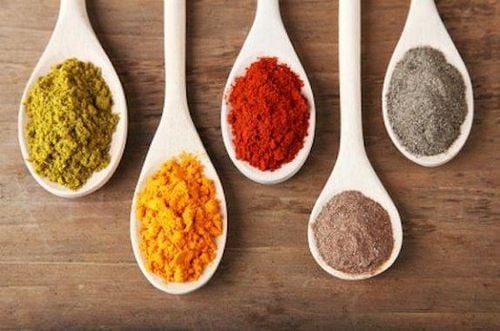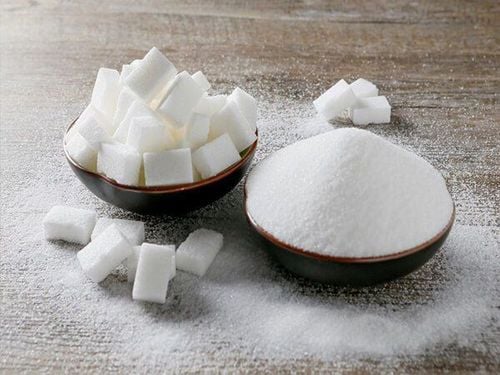This is an automatically translated article.
When shopping, simply observing food labels will help consumers easily grasp important information about a particular food or drink, thereby making healthy choice decisions. more for nutrition.Reading food labels also requires a certain understanding of the information the manufacturer has provided, such as nutrients, additives, reference amounts (RIs) or messages of Product packaging color.
1. What are food labels and why use them?
Usually, product food labels will provide a lot of useful information about a certain food or drink. Putting themselves in the shoes of consumers when buying food, manufacturers need to determine what information is important to provide and how it should be presented.
Food product labels need to be clear, legible and non-intrusive to help consumers better understand the foods and beverages they choose to buy. Most prepackaged foods will have to provide nutritional information on the label. However, the nutrition labeling rules do not apply to dietary supplements and natural mineral waters.
Through these food labels, you will be able to make healthier choices when shopping, such as choosing foods and drinks based on the following criteria:
Low in fat and quality saturated fat Low sugar Low salt Low calories
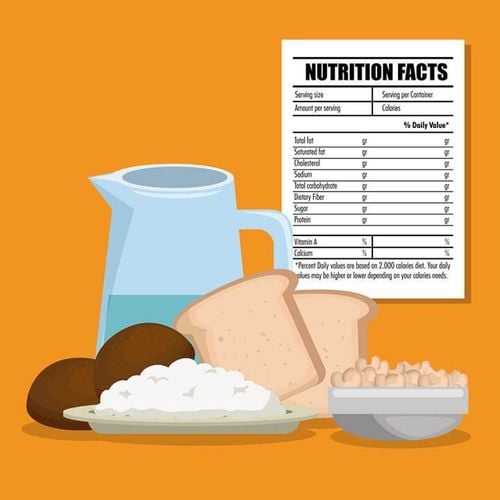
Các nhãn thực phẩm sản phẩm sẽ cung cấp rất nhiều thông tin hữu ích về một loại thực phẩm
2. What does the back of the food packaging label include?
By law, most prepackaged products have a nutrition label on the back of the package. Nutrition labels should include the following:
Calories: Calculated in calories (kcals) or kilojoules (kJ). Fat content: Calculated in grams (g). Saturated fat content: Calculated in grams (g). Sugar content: Calculated in grams (g). Carbohydrate content: Calculated in grams (g). Protein content: Calculated in grams (g). Salt content: Calculated in grams (g). Information on the back of food packaging should be expressed in terms of 100ml or 100g of product, however it may also be indicated additionally by section. In addition to the values just listed above, you may also find some other information also listed on the food packaging, such as fiber, starch, sweetener, monounsaturated fat or vitamins or minerals of any kind.
3. Explanation of terms listed on nutrition labels
The term “energy”: To denote the amount of energy contained in a food or drink, measured in calories. Knowing the calorie content of that food will make it easier for you to keep track of how much energy you're taking in. You'll see on the nutrition label, the calorie content is in kcal and kJ, which stands for kilocalories and kilojoules. Kilocalories is another word for 'calorie'. Kilojoules are units of measurement of calories (calories multiplied by 4.2). The term “Carbohydrates”: Includes starches found in bread, rice, pasta, potatoes, and sugar. This also includes sugar that has been added to coffee by food manufacturers; or found in natural honey, syrups, fruit, milk and fruit juices. The term “Sugars”: The carbohydrate content of a food or drink comes from sugar (the rest is from starch). The total amount of sugar that the food provides will be recorded on the nutrition label. Total sugar will include both natural sugars found in fruit and whole milk. For example, when you look at a plain yogurt, you'll know it contains 9.9 g of total sugar. The term "Fat": Includes saturated and unsaturated fats. Saturated fat is the type of fat that we should cut down in our daily diet, while unsaturated fat should be added more. Eating too much saturated fat can raise your blood cholesterol levels and lead to a higher risk of heart disease and stroke. The term “Protein” is the total protein content of a food. Our body will need protein to be able to grow and repair damage on its own. Term “Salt”: Includes all sodium in foods. Most sodium comes from salt (sodium chloride), some of which can occur naturally in foods. In addition, it can also come from supplements or additives.
4. What does the front of the food packaging label include?
According to the Food Information Regulations, repeating information on the front of prepackaged foods and beverages is up to each manufacturer. The information on the front of the product must be displayed as follows:
Calories (kJ and kcal) Fat Saturated fats Sugars (total sugars) Salt This information will be stated per 100g or 100ml per serving or both 2. Government suggested formats are red, amber, green and reference quantity percentage coding. These color coding look like traffic lights. Using the front packaging label is really helpful when you want to quickly compare different foods and make healthier choices.
Here's how to read the color coding on the front of food packaging:
Blue: If the sticker is mostly green, this tells you that the food is low in nutrients. Amber: This color will tell you the product is not high or low in specific nutrients. You can safely use foods with amber color on the label. Red: Foods that are high in fat, saturated fat, sugar or salt. You should cut back on foods with a lot of red on the label, or eat them less often in small amounts.
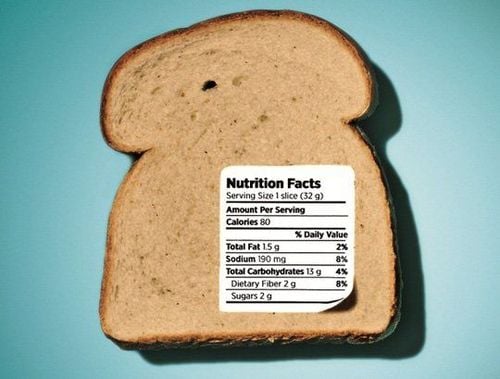
Đa phần các sản phẩm đóng gói sẵn đều có nhãn dinh dưỡng ở mặt sau bao bì
5. What is the reference amount?
Reference Amounts (RIs) are also often listed on food labels, which are a guide or standard to help consumers make healthy and balanced dietary choices. body every day.
For adults, their reference intake for a day usually includes:
Energy: 8400kJ or 2000kcal Fat: 70g Saturated fat: 20g Carbohydrates: 260g Sugar: 90g Protein: 50g Salt: 6g If you see on food labels that a product provides 50% RI for saturated fat, this means that the serving contains half of your maximum daily saturated fat intake and for the following days you should choose Other foods are lower in saturated fat.
Actually, RI is not used for fiber. However, fiber may still be listed on the nutrition label on the back of food packaging with phrases like "source of fiber" or "rich in fiber".
6. Allergy information on food labels
Allergy warnings on food labels are especially important for people who are prone to food allergies. This helps them quickly grasp information about that food and make a decision as to whether it is right for them.
Substances or ingredients in foods that can cause allergic reactions will be highlighted by highlighting, underlining, using bold or italics, using different colors or capitalizing.
7. Nutrition and health claims on food packaging
Nutrition claims are often related to what a food provides, such as:
No sugar: Must contain less than 0.5g of sugar per 100g Low fat: Must contain less than 3g of fat > 100g Rich in fiber: Must contain at least 6g fiber > 100g Source of vitamin D : Must contain at least 15% vitamin D RI per 100g Regarding health claims, these are statements stating or suggesting that there is a relationship between food and health. For example, calcium is needed to maintain strong bones, or potassium contributes to the maintenance of normal blood pressure levels.
Health claims on product food labels must not state that the food can prevent, treat, or cure any disease or medical condition. Also, they are not allowed to mention the rate or amount of weight loss.
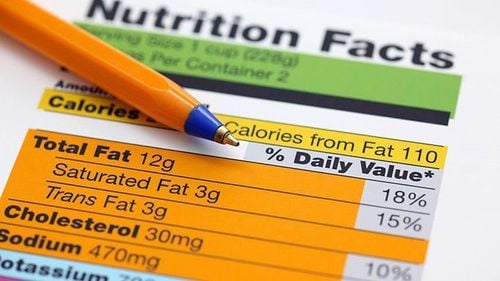
Việc đọc tem nhãn thực phẩm cũng cần đòi hỏi sự hiểu biết nhất định về các thông tin mà nhà sản xuất đã cung cấp
8. Some other information on food labels
Besides the nutritional information, the food label also provides some other information about the food.
List of ingredients: If a food or beverage has 2 or more ingredients (including any additives) they all need to be listed in descending order of weight. Therefore, the main ingredients of packaged foods are always displayed first. This also helps you make healthier food choices for your diet. For example, when the first ingredient on a food label is "sugar" or "butter," you'll recognize this as the main ingredient and that the food is relatively high in fat or sugar.
Food additives: Each type of food can have a number of different additives:
Antioxidants: For example, vitamin E (E307), commonly used in foods that contain a lot of fat, helps prevent the fat from going rancid. Another fairly commonly used antioxidant in foods is vitamin C, also known as E300 or ascorbic acid. Preservatives: Commonly used to prevent food from spoiling and prolong its shelf life. For example, sulfur dioxide (E220) can be added to dried fruit to prevent mold growth, or bacon is also often treated with nitrate (E252) to help prevent bacterial growth bacteria. Colorants: To make food more colorful and attractive. Some food colorings can come from natural sources like curcumin from turmeric (E100), others like E110 are often artificial. Flavorings and flavor enhancers: Often used to add flavor to foods. One of the most popular flavor enhancers is monosodium glutamate (MSG - E621). Sweetener: Used to add sweetness to low-calorie foods, such as yogurt or drinks. Some common sweeteners, such as acesulfame-K (E950), aspartame (E951), and saccharin (E954). Emulsifier: Helps to mix fat and water together. One of the most common emulsifiers is Lecithin (E322), which is found naturally in many foods. Gelling agent: For example pectin (E440), which is a soluble fiber found in fruits (eg apples), helps give texture to products and adds thickeners to products such as soup or sauce.
Please dial HOTLINE for more information or register for an appointment HERE. Download MyVinmec app to make appointments faster and to manage your bookings easily.
Reference source: nutrition.org.uk






